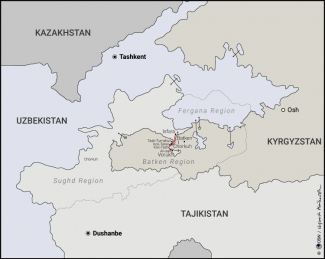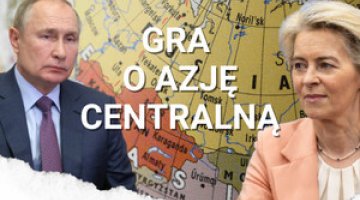Central Asia: a region without border disputes?
On 8 January, the heads of government from Kyrgyzstan (Adylbek Kasymaliev), Tajikistan (Qohir Rasulzoda), and Uzbekistan (Abdulla Aripov) held talks aimed at finalising the settlement of border issues near the tri-border area in the Fergana Valley. This region encompasses the final territories whose status as belonging to specific states had recently been a subject of dispute among them.
Although no document was signed as a result of the meeting, the talks significantly advanced the process of finalising border agreements in Central Asia. The presence of Uzbekistan’s prime minister should be understood as an example of shifting political dynamics in the region, where disputes are increasingly being resolved by local actors rather than under the auspices of external powers, particularly Russia.
Commentary
- The meeting marks an important step towards resolving border disputes in Central Asia. Although Western commentators and the media of all three countries have hailed it as ‘historic’, it actually represents part of a longer-term process. The groundwork for the meeting was laid during a consultation meeting in December 2024 by the governors of the Batken Region (Kyrgyzstan), Fergana Region (Uzbekistan), and Sughd Region (Tajikistan).
- The normalisation of border issues was facilitated by Uzbekistan’s constructive regional policy under President Shavkat Mirziyoyev, who took office in 2016. During the rule of his predecessor, Islam Karimov, Uzbekistan had strained relations with all its neighbours. Between 2016 and 2024, the Central Asian states agreed on the alignment and demarcation of the Kazakh-Uzbek border, as well as the delimitation of the Uzbek-Kyrgyz and Uzbek-Tajik borders. This included the demilitarisation of the Uzbek-Tajik border and the restoration of cross-border traffic, with demarcation now nearing completion. Importantly, these agreements were achieved without seeking mediation from external actors, underscoring the commitment of Central Asian states to resolve disputes independently.
- The process of reaching agreements on border issues has also been influenced by regional leaders’ consideration of the international context following Russia’s invasion of Ukraine. All Central Asian states have exercised caution in their response to the invasion, with none expressing support for Russia’s aggression. This stance has been appreciated by Western partners (the EU, Germany, France), who are promoting closer regional cooperation through transport, trade, and resource-based projects. Russia, too, has adjusted its policy towards Central Asia, increasingly engaging as a constructive partner rather than from a position of strength. To leverage the benefits of this new approach, Central Asian leaders have expanded regional cooperation on an unprecedented scale. The presidents of Kazakhstan and Uzbekistan, in particular, have played positive roles, as demonstrated by their active involvement in resolving border issues. Moreover, the region’s states increasingly present themselves as a unified bloc (known as C5+) in contacts with significant external actors and are advancing a regional cooperation format (the Consultative Meetings of the Heads of States of Central Asia).
- The swift progress in border agreements, coupled with the political will demonstrated by Kyrgyzstan and Tajikistan, indicates that signing a border treaty between the two countries this year is a realistic prospect. This is particularly noteworthy in the context of the bloody border clashes that occurred in the Fergana Valley as recently as autumn 2022 (see ‘Fighting on the Kyrgyz-Tajik border’). Despite being formal allies in the Moscow-dominated Collective Security Treaty Organization (CSTO), Bishkek and Dushanbe rejected Kremlin-mediated peace talks during the border clashes in 2022. Instead, starting in early 2023, they initiated bilateral efforts to address the border issue and established a commission for this purpose. In December 2024, the heads of the security services from both countries, who led the commission, announced that a final agreement had been reached. In January 2025, the Kyrgyz side submitted the documents related to the border’s delimitation and demarcation to its parliament for review and further processing.
- The border agreements in Central Asia, with the Kyrgyz-Tajik treaty as the final step, eliminate the consequences of the territorial delineation dating back to the 1920s. During that period, borders were drawn without considering the ethnic composition of the population or essential needs such as access to water and pastures. The transboundary Fergana Valley was a prominent example of this approach. Since 2016, progress in delimiting and demarcating borders has been both a significant practical and symbolic achievement for the states involved. However, this does not preclude the possibility of future local conflicts, for instance over Vorukh. The status of the road connecting Vorukh to the Tajik city of Isfara was the most contentious point in the negotiations, and no details of the agreement on this matter have been disclosed. Historically, Kyrgyzstan regarded Vorukh as a Tajik enclave on its territory, while Tajikistan claimed both the village and the road as its own land. Additionally, the dynamics of local processes will be influenced by the personal relationships between the region’s authoritarian leaders.
Map. The Fergana Valley divided by the territorial-administrative units of Kyrgyzstan, Tajikistan, and Uzbekistan.






